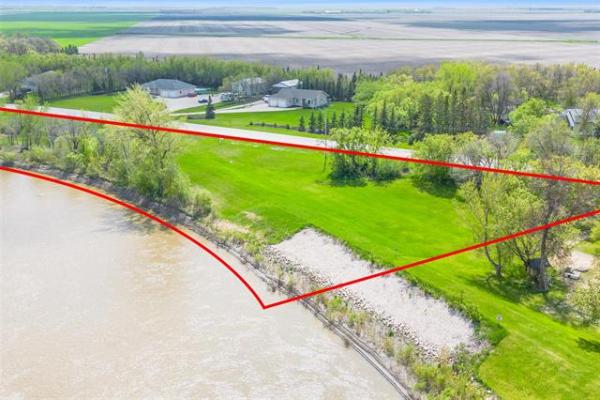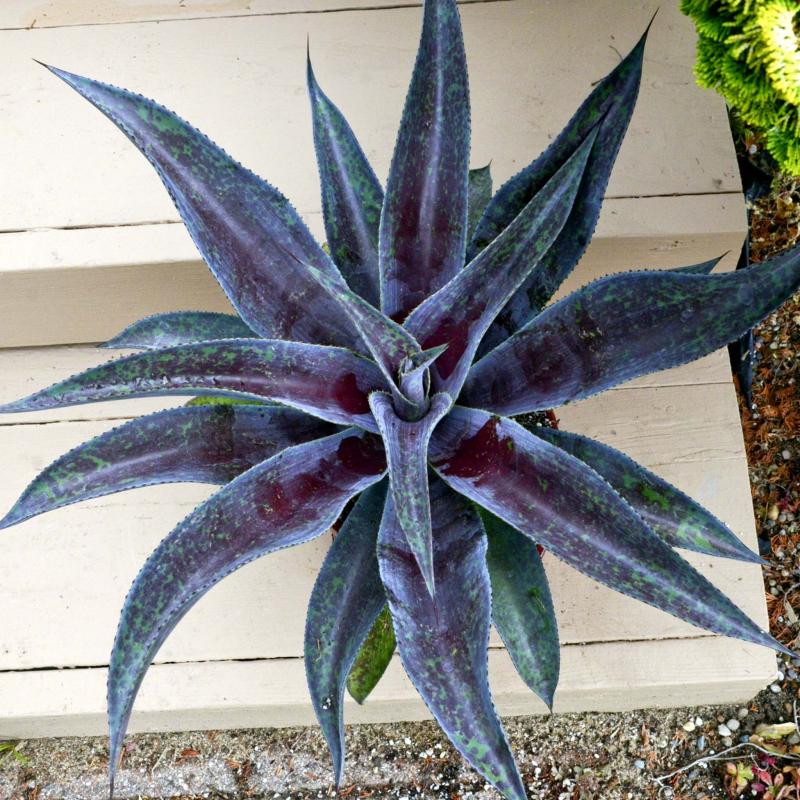
Walters Gardens Inc.
Mangave Mission to Mars is a drought-tolerant annual succulent that demands little water.
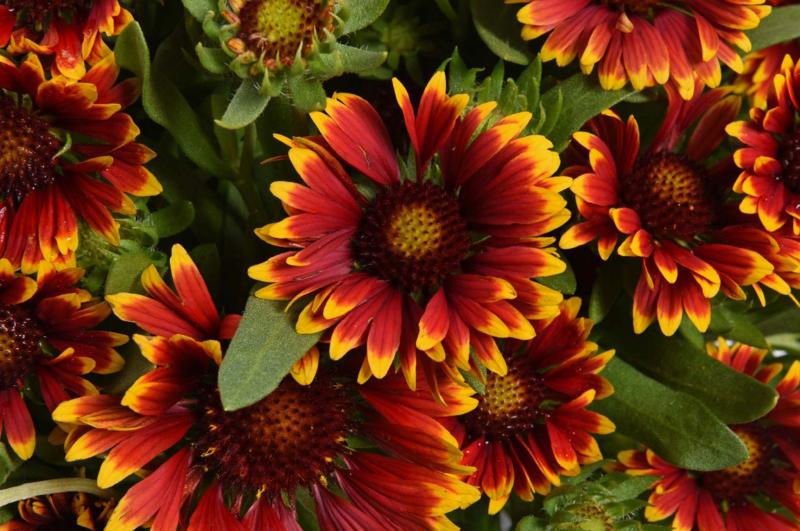
Dummen Orange
New for 2018, Gaillardia aristata SpinTop Orange Halo is both heat and drought tolerant but still needs to be established in its first year in the garden.
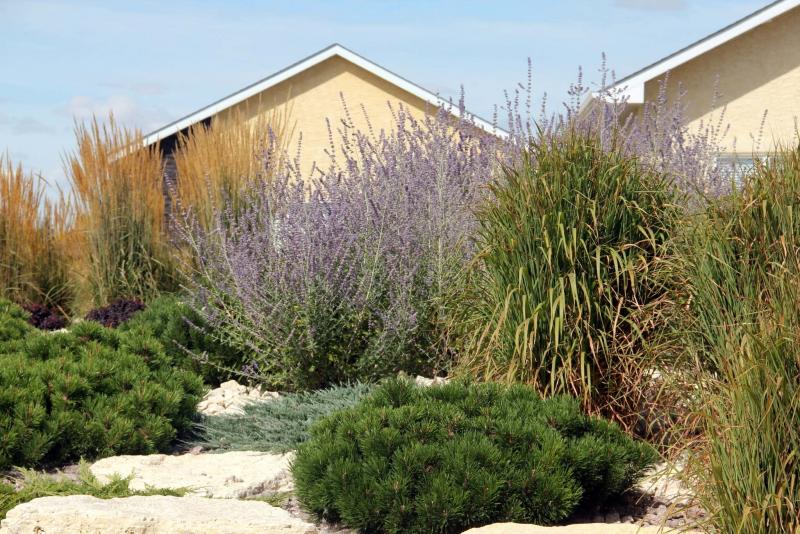
Roswitha Nowak
This xeriscape in Winnipeg is ready for the heat. Plants include drought-tolerant grasses, Mugo pine and Russian Sage.

Richard Lautens
There’s a reason why Dave Phillips, Environment Canada’s senior climatologist, is checking the rain gauge. Prepare your garden for dry, hot weather.
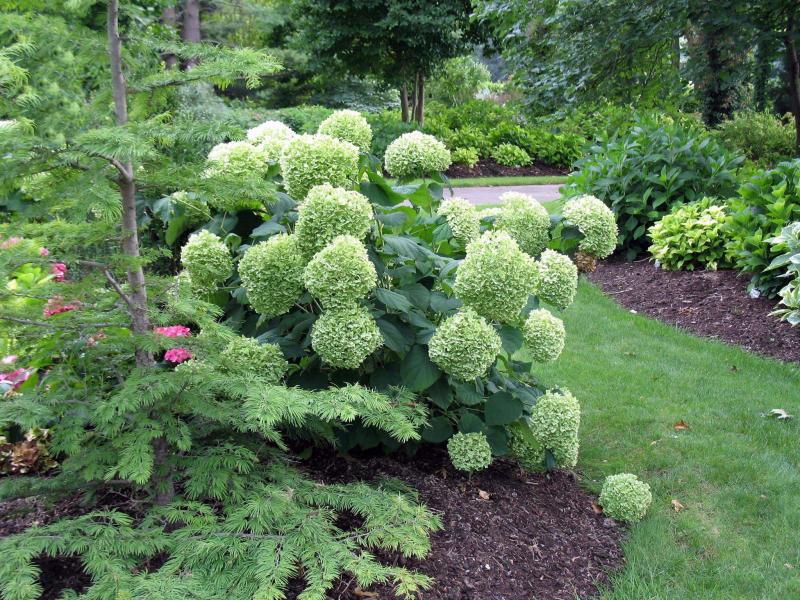
Bailey Nurseries
Hydrangeas are thirsty plants. Water consistently and maintain even moisture with a layer of mulch.
After a long winter, soil conditions remain dry across much of the southern prairies. To get a sense of just how dry local conditions are, I talked to Dave Phillips, Environment Canada’s senior climatologist.
"There’s a serious soil-moisture deficit situation," Phillips said. The numbers tell the story. "In the period from last October 1st to May 16th," Phillips said, "there was a grand total of about 67 millimetres of rain and snow." Normal precipitation during that period is 201 mm; therefore, we have received about one-third of the moisture our area typically receives.
Phillips broke it down further: "From January 1st to May 16th, there was 28 mm of rain and melted snow. Normally, it would be 118 to 120 mm." Do the math and it represents about one-quarter of what we typically receive in Winnipeg during that time period. It’s like a bankruptcy situation, Phillips said. We need to go back in time, 40 years ago to 1980, to find a similar dry period, although conditions that spring, Phillips said, were even drier.
The rain that fell last Friday amounted to 6.8 mm of precipitation, which doesn’t add up to the rescue rainfall that we need right now. What we need, Phillips said, is a slow, percolating rain, the kind that occurs in the middle of our holidays and drives us indoors to play Monopoly for three or four days. A slow-motion rain gets down into the root zone, gives a nice drink of water to plants and trees and brings vegetation alive, in contrast to a quick, pounding rain that falls too quickly and runs off the soil surface.
The good news is that June is the wettest month on the Prairies, right? "Our models for June, July and August," Phillips said, "are showing warmer than normal." Temperatures in May have soared to 30 C. We’ve also had some windy bouts which dry out the soil even more. So what’s a gardener to do? Plenty, and the time is now.
Extended dry periods take a toll on many of the processes that are essential to healthy plant growth. Water is important to the rate of photosynthesis in plants, the movement of water and nutrients from a plant’s root system to its leaves as well as microbial activity in the soil. Whenever any of these processes are disrupted, plants become stressed. Visible signs include wilted leaves or browning at the tips or edges of leaves, and in some cases, leaf drop. Stressed plants are vulnerable to disease and pest infestations.
Start by ensuring good soil structure with adequate drainage and aeration. One of the qualities of our clay soil is that it has very small pore spaces. This means that water penetrates slowly and is stored longer than it is in sandy soil, which has large pore spaces. When clay soil is compacted, water doesn’t drain away freely after a rainfall. To improve or maintain good soil structure for the dry season ahead, add a layer of organic material such as compost or well-rotted manure.
As the layer of organic material slowly decomposes, it will help to stimulate beneficial soil microbial activity essential to healthy plant growth. Adding an organic fertilizer such as Gaia Green all-purpose 4-4-4, which contains alfalfa meal, glacial rock dust, rock phosphate and kelp meal, slowly feeds your soil and improves soil microbial activity. Aubin Nurseries in Carman now carries it in 10-kilogram bags.
Heavy bloomers such as hydrangea shrubs depend on adequate nutrients as well as soil that is kept evenly moist and well drained. During dry periods, hydrangeas require regular watering or the stems with their large flower heads droop noticeably. To conserve water, add a 10-centimetre layer of mulch such as arborist wood chips.
Prefer the look of black soil? I was ambivalent, too, when I first clambered up onto a pile of arborist wood chips at Ron Paul Garden Centre. With all the branches, twigs and chunks of bark, its rustic appearance took some getting used to once it was applied around the base of my plants. A few weeks later, I was completely hooked. Not only does organic wood chip mulch conserve moisture brilliantly, but it also cuts down on weeds. Within a year, the mulch layer breaks down surprisingly quickly, adding nutrients to the soil in the process, and then must be renewed with another layer.
Grass clippings, shredded leaves and straw also help to cool the soil. Recently, Ed Amman, a local gardener, transplanted 160 tomato seedlings. Beginning in late June, he mulches the soil surface with a layer of grass clippings. Tomatoes require consistent, even soil moisture which can prevent blossom end rot. Amman applies water directly at the base of plants to avoid wetting the leaves, which can result in foliar diseases.
For flower beds, are drought-tolerant perennials and shrubs the answer? Yes and no. Native plants have built-in drought tolerance and are easily adapted to our climate and soil conditions, yet even native plants that are newly installed must be well-watered until they are established.
Bearded iris is quite drought-tolerant once established, Barbara-Jean Jackson, Can-West Iris Society, said. "Everything they need to survive and endure drought is right in the rhizome," she says. Many varieties will be available at the CanWest Iris Society’s 11th annual flower show, June 3 at the Bourkevale Community Centre, 100 Ferry Rd.
Gaillardia aristata SpinTop Orange Halo is a new perennial introduction for 2018. Orange Halo is a compact plant with large, vividly coloured dark orange daisy-like blooms with yellow tips. The SpinTop series offers extreme heat and drought tolerance.
Mangave is an intriguing new annual introduction for 2018. A cross between the genus Manfreda and Agave, Mangave is exceptionally heat and drought tolerant. In addition to being a low-maintenance plant, Mangave has a faster growth rate than Agave. The Mangave collection, available at Jensen’s Nursery, includes numerous exotic varieties from Mission to Mars, with intense burgundy-red colouration on its green leaves, to Catch a Wave, with thick, curly silvery-blue leaves that are spotted. Very cool.
To establish your new plants, acclimatize them first to the outdoors. Plant early in the day and ensure that plants are watered thoroughly. Maintain a regular watering schedule and avoid overwatering or underwatering.
For a low-maintenance xeriscape, pair Russian Sage with Karl Foerster feather reed grass, rosy-coloured barberry shrubs and dwarf mugo pine. There are many varieties of Russian Sage, both large and compact, to choose from.
Wondering how you will manage to keep your lawn lush and green this summer? This spring, dethatch, aerate and top-dress your lawn and set your mower on its highest setting. Don’t remove grass clippings as they return nutrients to the soil as they break down. Alternatively, consider replacing your lawn with a slow-growing, drought-tolerant ground cover such as Dwarf Creeping Thyme (Thymus praecox Elfin). Last summer, I replaced a small 1 1/2 by 2 1/2 -metre area of lawn in my yard with Dwarf Creeping Thyme and love the effect of the dense mat and its dainty, soft pink flowers in early summer.
colleenizacharias@gmail.com

